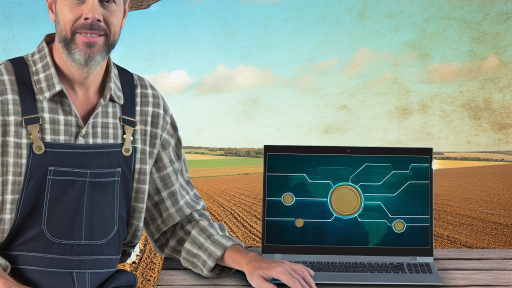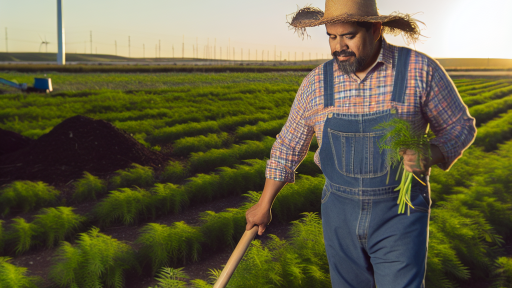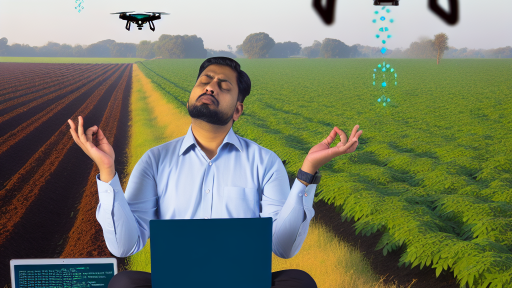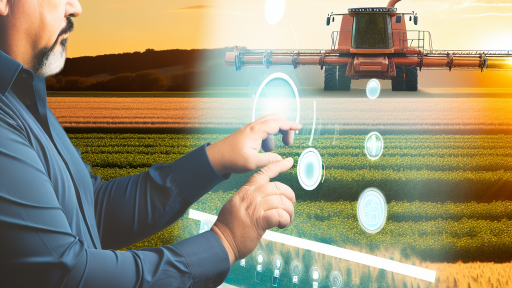Introduction to Drone Technology in Agriculture
Drone technology has transformed various sectors, including agriculture.
This advancement allows farmers to monitor crops effectively.
Farmers can now gather data on pests and diseases from the sky.
Furthermore, drones enable precise pesticide application.
As a result, farmers can optimize their efforts and resources.
The Benefits of Drones for Farmers
Drones provide unparalleled access to agricultural data.
Farmers receive real-time insights into crop health.
This information aids in early disease detection.
Consequently, farmers can act swiftly to mitigate damage.
Additionally, drones enhance the application of treatment methods.
How Drones Improve Pest Control
Drones equipped with advanced imaging technology can identify pest hotspots.
This capability ensures targeted pest management.
As a result, farmers use fewer chemicals, promoting sustainability.
Using drones leads to healthier crops and better yields.
Moreover, this method reduces labor costs associated with pest control.
Transform Your Agribusiness
Unlock your farm's potential with expert advice tailored to your needs. Get actionable steps that drive real results.
Get StartedThe Role of Drones in Disease Management
Drones help identify areas affected by crop diseases.
This early detection is critical for effective disease management.
Farmers can treat only the affected areas, conserving resources.
Additionally, drones facilitate the monitoring of disease spread.
This proactive approach minimizes potential crop loss.
Overview of Pest and Disease Control in Farming
Importance of Pest and Disease Management
Pest and disease management is crucial for maintaining agricultural productivity.
Farmers must protect their crops to ensure a healthy yield.
Effective control methods can minimize economic losses.
Additionally, this practice supports sustainable farming efforts.
Common Pests and Diseases in Agriculture
A variety of pests can threaten crops, leading to significant damage.
Insects, such as aphids and locusts, can rapidly reproduce and consume plants.
Weeds also pose a challenge as they compete for nutrients and water.
Fungal infections, such as powdery mildew, can devastate yields.
Understanding these threats is vital for implementing effective control strategies.
Traditional Control Methods
Farmers have long relied on traditional pest and disease control methods.
Such methods include crop rotation and intercropping.
These approaches disrupt pest life cycles and reduce infestations.
Moreover, biological controls, like introducing natural predators, are often employed.
However, these methods can be limited in their effectiveness.
Limitations of Conventional Strategies
Conventional pest control methods might not adequately manage severe infestations.
Overreliance on chemical pesticides can lead to resistance in pests.
Moreover, these chemicals may negatively impact non-target species.
Therefore, innovative solutions are necessary to enhance control measures.
The Role of Technology
Technology has transformed how farmers approach pest and disease control.
Showcase Your Farming Business
Publish your professional farming services profile on our blog for a one-time fee of $200 and reach a dedicated audience of farmers and agribusiness owners.
Publish Your ProfileInnovative solutions, like drones, offer new possibilities for monitoring crops.
Drones can swiftly cover large areas, identifying problem spots effectively.
Furthermore, they allow for timely interventions, improving overall crop health.
Integrating technology enhances not only efficiency but also sustainability in farming.
How Drones Are Transforming Pest Monitoring
Revolutionizing Data Collection
Drones collect data efficiently across vast agricultural areas.
Using advanced sensors, they capture high-resolution images and real-time data.
This technology allows farmers to monitor crop health quickly.
Moreover, drones can cover larger fields in a fraction of the time.
Consequently, farmers can identify problem areas that need attention.
Enhancing Precision in Pest Detection
Drones equipped with multispectral cameras detect pests early.
They highlight specific plants affected by infestations or disease.
This targeted approach helps in applying pesticides more effectively.
Additionally, it minimizes chemical usage, promoting environmental health.
As a result, farmers can make informed decisions based on accurate data.
Improving Surveillance with Real-Time Monitoring
Drones allow for continuous monitoring of agricultural fields.
This real-time surveillance helps track pest movements and spread.
Farmers receive alerts about pest outbreaks as they happen.
Furthermore, drones facilitate timely interventions to control infestations.
This proactive approach substantially reduces crop loss and financial impact.
Integrating Drones with Other Technologies
Drones work seamlessly with precision agriculture tools.
For instance, data collected can be integrated with GPS mapping systems.
This integration enhances spatial analysis of pest activity.
Consequently, farmers can develop comprehensive pest management strategies.
Such strategies lead to improved resource allocation and productivity.
Transforming Farmer Decision-Making
Drones provide actionable insights that aid farmer decisions.
With detailed analysis, farmers can prioritize their pest control efforts.
Additionally, they can monitor the efficacy of treatments applied.
Subsequently, this leads to better resource management and cost savings.
Ultimately, informed decisions increase overall farm sustainability.
Gain More Insights: Integrating Agri-Fintech Technologies For Smarter Farm Management
Automated Spraying Systems: Enhancing Precision Agriculture
Introduction to Automated Spraying Systems
Automated spraying systems use drones for agricultural pest and disease control.
They enhance precision by targeting specific areas with accuracy.
This technology reduces chemical waste and promotes environmental safety.
Benefits of Drones in Pest Control
Drones allow for real-time monitoring of crop health.
They can quickly identify areas affected by pests and diseases.
Additionally, drones provide detailed imagery for better analysis.
Improving Efficiency with Automation
Modern spraying systems automate the application process.
This reduces labor costs and minimizes human error.
Farmers can achieve consistent application across large fields.
Data-Driven Decision Making
Drones collect valuable data for informed decision-making.
Showcase Your Farming Business
Publish your professional farming services profile on our blog for a one-time fee of $200 and reach a dedicated audience of farmers and agribusiness owners.
Publish Your ProfileFarmers receive feedback on the effectiveness of spray applications.
This information supports timely interventions and optimizes treatments.
Case Studies of Successful Implementations
Many farms have successfully integrated drone technology.
For instance, Greenfield Farms reported a 30% reduction in pesticide use.
Horizon Agriculture improved crop yields by quickly addressing infestations.
Future Trends in Drone Applications
The future holds exciting advancements for drone technology in agriculture.
We expect enhanced automation and increased integration with AI.
This will lead to even more precise and efficient pest management solutions.
You Might Also Like: How Genetically Modified Crops Improve Farm Yields
Data Collection and Analysis Using Drones for Pest Management
Introduction to Drone Technology in Agriculture
Drones play a vital role in modern agriculture.
They offer innovative solutions for pest management.
Farmers can efficiently monitor crops from the air.
Data Collection Capabilities
Drones collect various types of data effectively.
High-resolution images help identify problem areas.
Multispectral sensors capture data on plant health.
This data supports informed decision-making in pest control.
Analysis of Collected Data
Data analysis involves several steps.
First, data is processed using specialized software.
This software generates detailed maps of crop health.
Next, farmers can analyze pest infestations visually.
Benefits of Using Drones for Pest Control
Drones enhance pest management efficiency considerably.
They reduce the time needed for monitoring fields.
Moreover, drones minimize pesticide use through targeted application.
This approach not only saves money but also protects the environment.
Case Studies and Real-World Applications
Many farms have successfully integrated drones into their operations.
For example, GreenLeaf Farms saw a 20% reduction in pests.
They used drones to identify areas needing treatment quickly.
Similarly, RuralTech Innovations utilized drones for pest mapping.
Future Trends in Drone Use for Pest Management
The future of drone technology appears promising.
Advancements in AI will improve data analysis further.
Additionally, drones will become even more automated.
Farmers can expect greater integration with other technologies.
Find Out More: Drone Technology Revolutionizing Sustainable Farming Practices
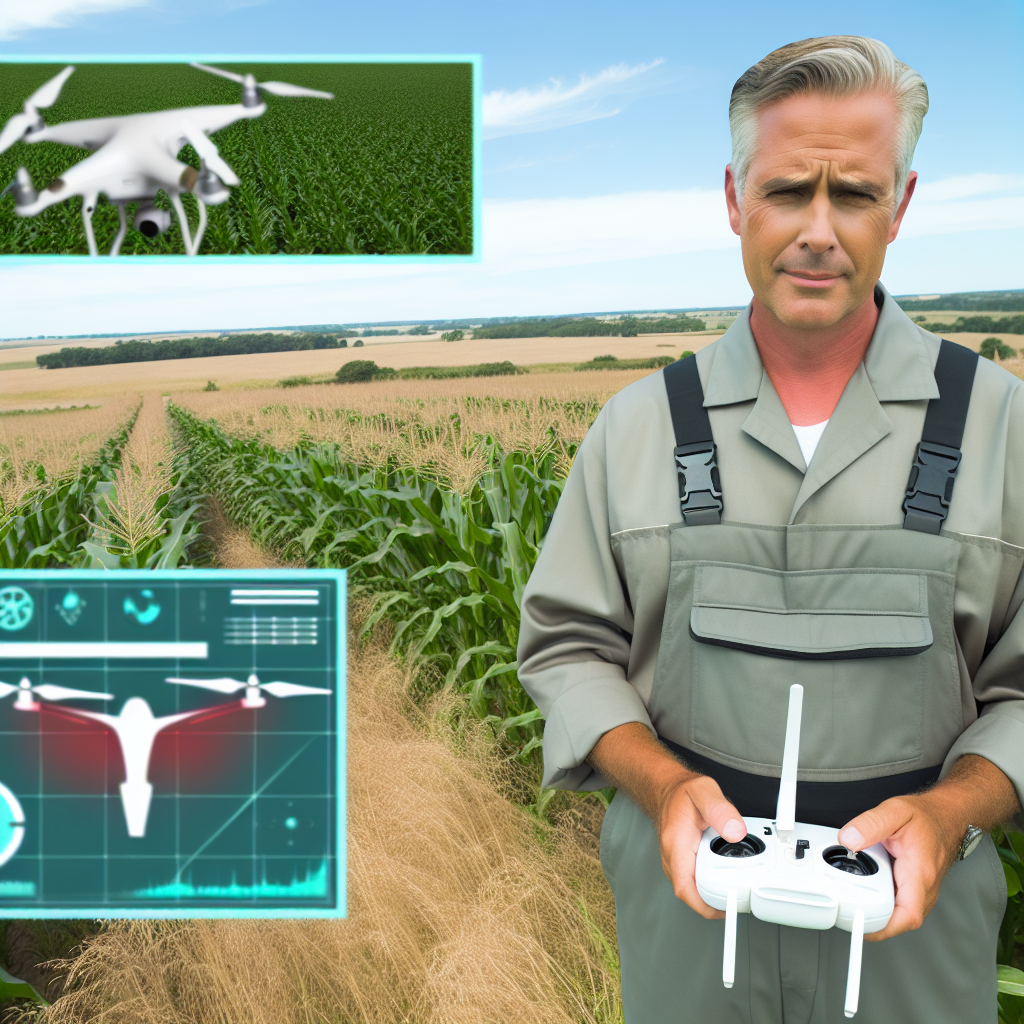
Case Studies of Successful Drone Applications in Disease Control
Utilizing Drones for Early Disease Detection
Drones have revolutionized early disease detection in crops.
Agricultural firm Green Fields used drones to scan vast cornfields.
They detected the onset of maize leaf blight early.
This proactive measure reduced crop losses significantly.
Additionally, these drones captured high-resolution images.
Images allowed farmers to analyze plant health accurately.
Spotting Pest Infestations with Precision
A local farm, Sunny Acres, faced a severe locust problem.
Showcase Your Farming Business
Publish your professional farming services profile on our blog for a one-time fee of $200 and reach a dedicated audience of farmers and agribusiness owners.
Publish Your ProfileBy deploying drones, they monitored large portions of their land.
The drones used thermal imaging to identify infested areas.
Moreover, the team swiftly applied targeted pesticides.
This approach minimized chemical use while maximizing efficiency.
Mapping and Monitoring Disease Spread
AgriTech Innovations provided services for disease mapping.
They used drones to gather data on wheat crops affected by rust.
This data enabled clearer risk assessments in real-time.
Farmers received visual updates, helping them react quickly.
Such immediate actions improved overall crop management.
Integrating Drone Applications into Farm Management
Integrating drone technology proves essential in modern agriculture.
Farmers who utilize drones gain actionable insights constantly.
For instance, Green Harvest Farms maximized yield through drone analytics.
They implemented regular aerial surveys to monitor health trends.
This strategy allowed them to allocate resources effectively.
Collaborating with Technological Experts
Collaboration with tech companies enhances drone utilization.
A partnership between AgroDrones and local farmers proved fruitful.
They developed customized drone solutions tailored to specific needs.
Farmers reported improved outcomes due to technological integration.
Consequently, the region saw a boost in overall crop health.
Discover More: Biotechnology Innovations Driving Smart Agriculture
Comparative Analysis: Drones vs. Traditional Pest Control Methods
Introduction to Pest Control Methods
Effective pest control is critical for agricultural success.
Farmers traditionally use various methods to manage pest populations.
These methods include chemical treatments, biological controls, and cultural practices.
Each method has its advantages and disadvantages.
Drones in Pest Management
Drones offer innovative solutions for pest and disease control.
They can cover large areas quickly and efficiently.
This technology allows for precise targeting of pest-infested regions.
Drones can also monitor crop health using advanced sensors.
Farmers gain valuable data on pest population dynamics.
Cost Comparison
Traditional pest control methods often involve high labor costs.
Chemicals can also be expensive, especially for large farms.
In contrast, drones require an initial investment but reduce ongoing costs.
Long-term, they can lead to savings on labor and material costs.
Environmental Impact
Traditional methods can lead to chemical runoff in the environment.
This runoff negatively impacts water sources and soil health.
Drones minimize chemical usage through targeted application.
As a result, they promote a healthier ecosystem.
Furthermore, drones reduce the need for broad pesticide application.
Efficiency in Operation
Using drones significantly increases operational efficiency.
They enable rapid scouting and monitoring of large fields.
Showcase Your Farming Business
Publish your professional farming services profile on our blog for a one-time fee of $200 and reach a dedicated audience of farmers and agribusiness owners.
Publish Your ProfileMoreover, drones can operate in conditions that are hazardous for humans.
This feature enhances safety for farm workers.
Implications of Pest Control Approaches
Both drones and traditional methods have unique strengths.
Farmers should consider their specific needs when choosing methods.
Drones present a forward-looking approach to pest management.
They offer benefits in efficiency, cost-effectiveness, and environmental sustainability.
Future Trends in Drone Technology for Agricultural Pest Management
Advancements in Drone Capabilities
Drone technology continues to advance rapidly.
New capabilities enhance pest and disease control in agriculture.
For example, drones now feature improved sensors.
These sensors can detect plant stress indicating pest presence.
Furthermore, drones enable real-time data collection and analysis.
This capability allows farmers to make swift decisions.
Integration with AI and Machine Learning
Artificial intelligence is becoming integral to drone applications.
Drones equipped with AI can analyze crop images accurately.
This analysis helps identify pest infestations early.
Moreover, machine learning algorithms improve over time.
Thus, they enhance their detection precision constantly.
Utilization of Precision Agriculture Techniques
Precision agriculture benefits significantly from drone usage.
Drones help farmers apply pesticides only where needed.
This targeted approach reduces chemical usage drastically.
As a result, environmental impact decreases.
Farmers enjoy cost savings and improved crop yields.
Regulatory Developments
Regulations surrounding drone operations are evolving quickly.
Governments aim to streamline drone usage in agriculture.
New policies may allow for expanded airspace access.
This accessibility will enhance data collection efficiency.
Additionally, clear guidelines will lead to safer operations.
Increased Collaboration Across Industries
Collaboration between technology companies and farmers is growing.
Tech firms seek to understand farmers’ specific needs.
Farmers gain insights into the latest drone innovations.
This partnership fosters better solutions for pest management.
Ultimately, it leads to smarter farming practices.
Additional Resources
Aerial Application Technology Research : USDA ARS
Grants and Funding | National Invasive Species Information Center

